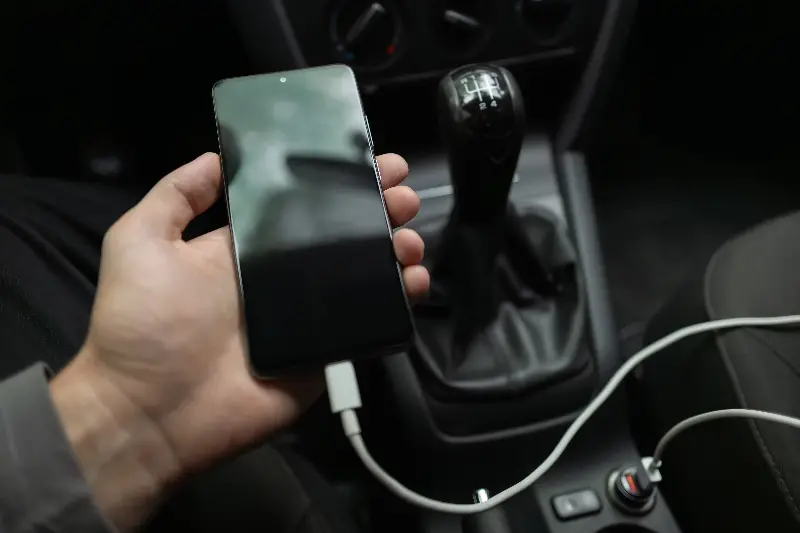
If you’re like most drivers today, your car’s USB port is as essential as your keys or seat belt. Whether you’re charging your smartphone for your daily commute, plugging in to queue up your favorite playlist, or syncing for navigation, the humble USB port seems like the ultimate convenience. But did you know this modern automotive feature could be silently harming your phone in ways you’ve never realized? Before you connect for your next road trip, discover how your vehicle’s USB port interacts with your devices, the surprising reasons it may be harming your smartphone, and what you can do to keep your digital co-pilot in top shape.
The Rise Of USB Ports In Cars
Over the past decade, in-car USB ports have evolved from luxurious perks to standard features in most modern vehicles. Automakers, aiming to blend tech and travel, offer USB connections so you can charge devices, transfer data, and access media all without leaving your seat. From simple charging-only ports to advanced entertainment hubs supporting Android Auto and Apple CarPlay, these connections promise to make driving smarter, safer, and more enjoyable.
However, the technology behind those ports isn’t always as advanced as the gadgets you’re plugging in. Car manufacturers often focus on function rather than finesse. This means that while it seems like a win-win situation, not all USB ports are created equal—and this difference could have unintended consequences for your prized smartphone.
Low Power, Slow Charging: Why Your Car Charges Differently
Many drivers expect their car’s USB port to charge smartphones just as quickly as a wall charger. Unfortunately, that’s rarely the case. Most in-car USB ports, especially those found in older models or non-premium vehicles, are rated at just 0.5 amps or 1 amp. In contrast, modern wall chargers and fast charging adapters often provide 2 amps or more.
What does this mean in practice? For starters, your phone charges more slowly. That inconvenient trickle of power might seem benign, but it can have sneaky consequences. When your phone charges slowly, especially when you’re using it for navigation or music streaming at the same time, it may end up draining almost as much power as it gains. Over time, the constant micro-charging and discharging puts extra strain on your phone’s battery, potentially reducing its lifespan and maximum charging capacity.

Voltage Irregularities: An Unseen Threat
It’s not just about the amount of power, but the quality of it. Unlike household outlets, the electrical systems in cars are subject to shifts and spikes in voltage, especially when the vehicle starts, stops, or powers other internal systems. These fluctuations can travel right through your car’s USB port and into your phone.
Most smartphones are designed to handle standard power inputs, but consistently exposing them to voltage irregularities can damage internal charging components and, in rare cases, even the phone’s processor. If you’ve ever noticed your phone heating up, displaying charging errors, or behaving oddly after being plugged into your car, this could be the culprit.
Data Security: A Concern You Might Have Overlooked
Charging your phone isn’t the only thing happening when you plug it into your car’s USB port—especially if the port supports data transfer. Whenever your device is connected for syncing or entertainment, it can become vulnerable to privacy risks. Cars that store navigation data, call logs, or app information after you connect your device could inadvertently retain sensitive data long after you’ve disconnected. This raises potential privacy concerns, especially if you’re renting, sharing your vehicle, or considering selling.
While major security breaches from car USB ports aren’t widespread, experts advise caution. It’s important to know what your car does with the connected data, and to clear synchronization memory on rental vehicles or before selling your own.

Tips To Minimize Smartphone Harm
Is it time to give up on convenient in-car charging? Not quite. Most of the harm can be mitigated with smart habits and inexpensive accessories.
First, invest in a quality 12V power adapter that plugs into your car’s lighter socket. These adapters typically provide higher amperage and more stable voltage than built-in USB ports, supporting safe, rapid charging. Look for adapters that bear certifications from your phone’s manufacturer for maximum compatibility.
Second, opt for high-quality charging cables. Cheap, poorly made cables can contribute to voltage issues and even become fire hazards. Always prefer cables from reputable brands or your phone’s original manufacturer.
Third, if your car's USB port is meant for data connections (such as Android Auto or Apple CarPlay), consider using it for syncing purposes only, and use a separate power source for charging. This way, you reduce stress on your phone’s battery and internal circuitry.
Finally, be proactive with security. When you’re done using your device with the car’s system, delete any data that may have been stored. On shared vehicles, factory reset the infotainment system if possible, and avoid syncing sensitive contacts or calendars if you don’t have to.
A Smarter Approach To Keeping Connected
Your car’s USB port might not be the tech-friendly haven you assumed it was, but with a little awareness and the right precautions, you can keep charging on the go without worry. By understanding the limitations and potential risks, you can ensure your smartphone lasts longer, charges faster, and keeps your digital life as safe as your next drive. So before you plug in on your next journey, remember—the smartest traveler is always the most informed.
